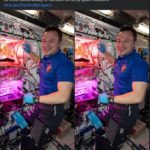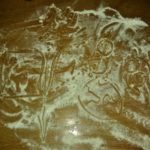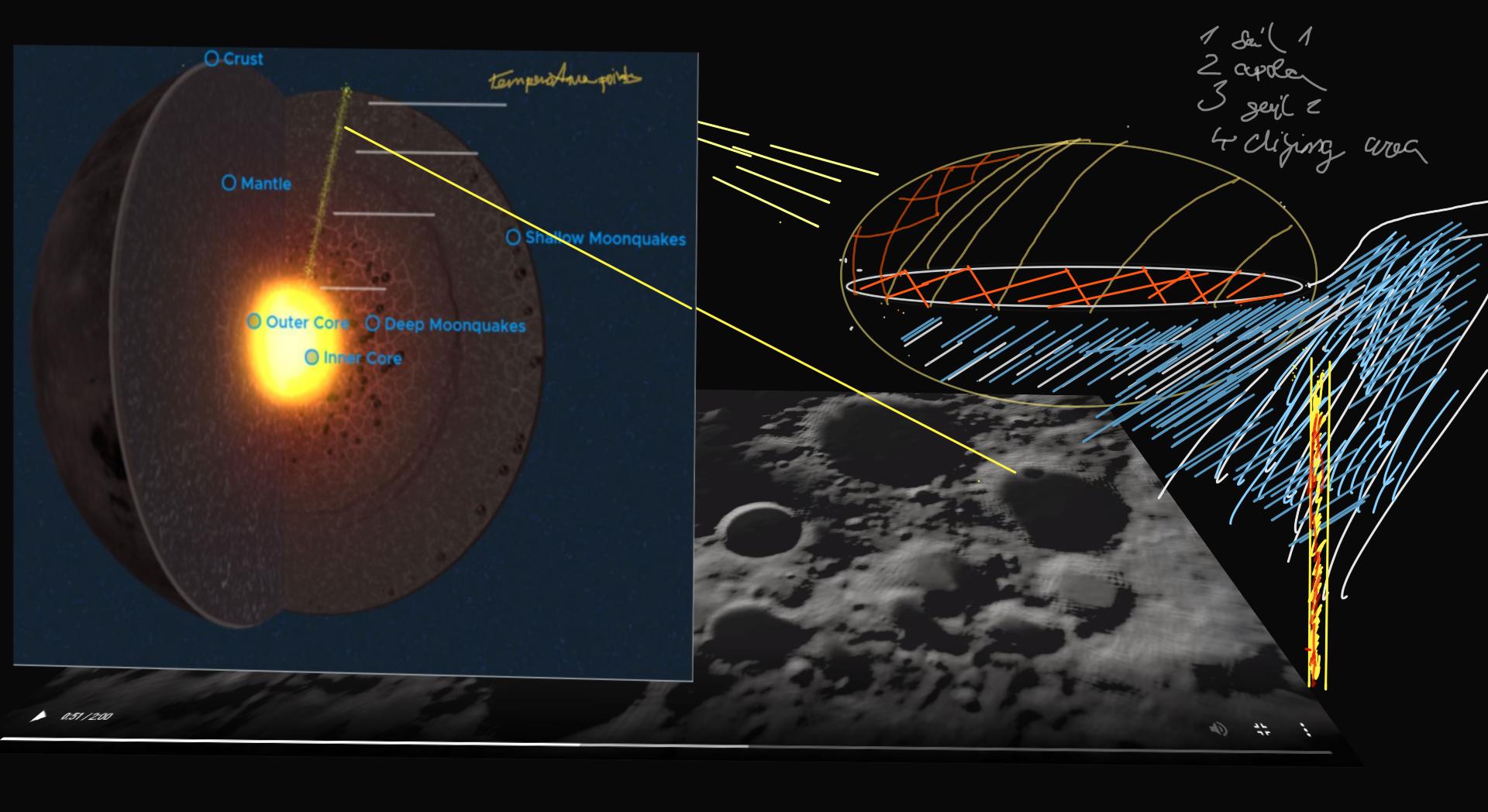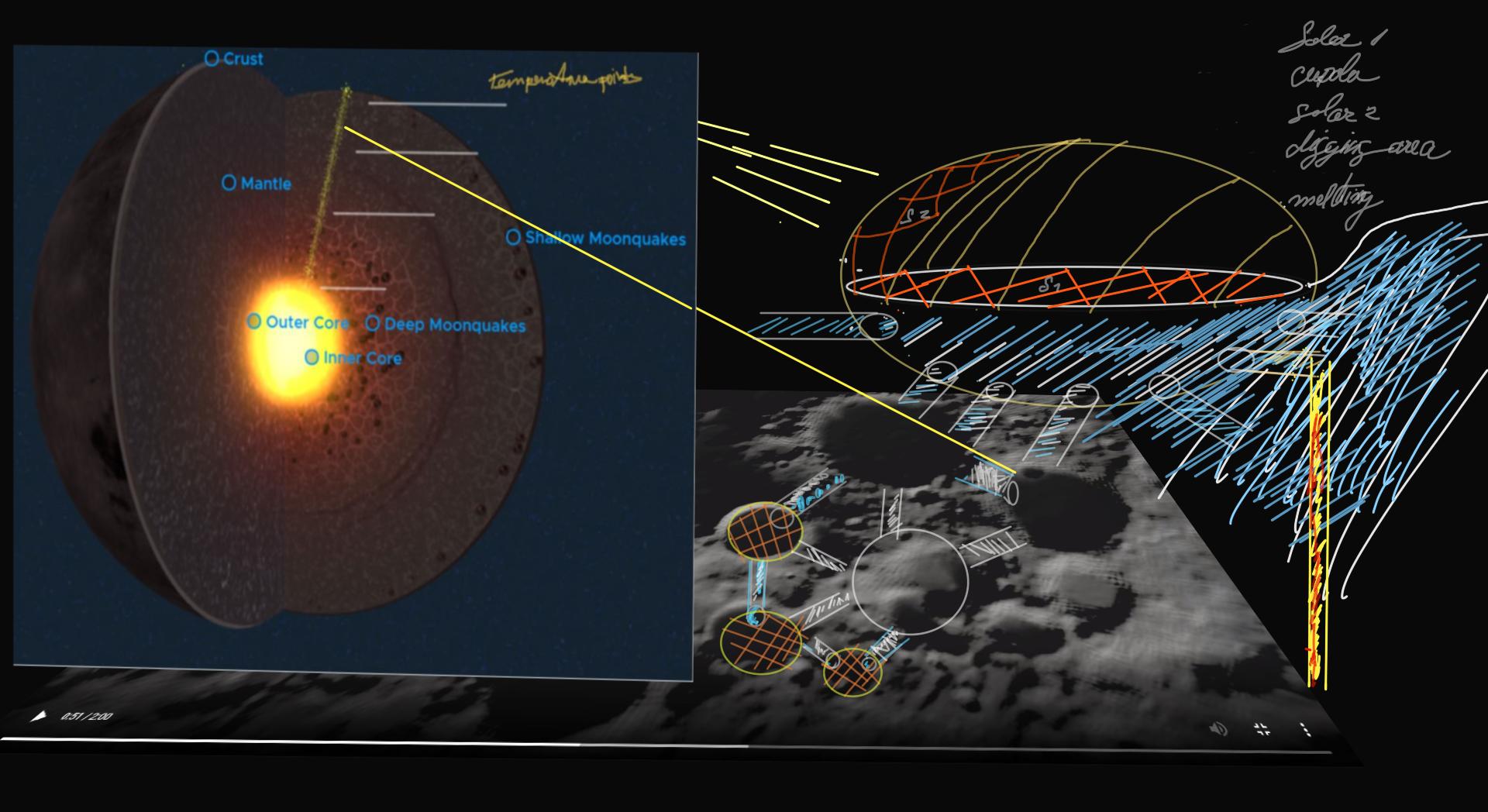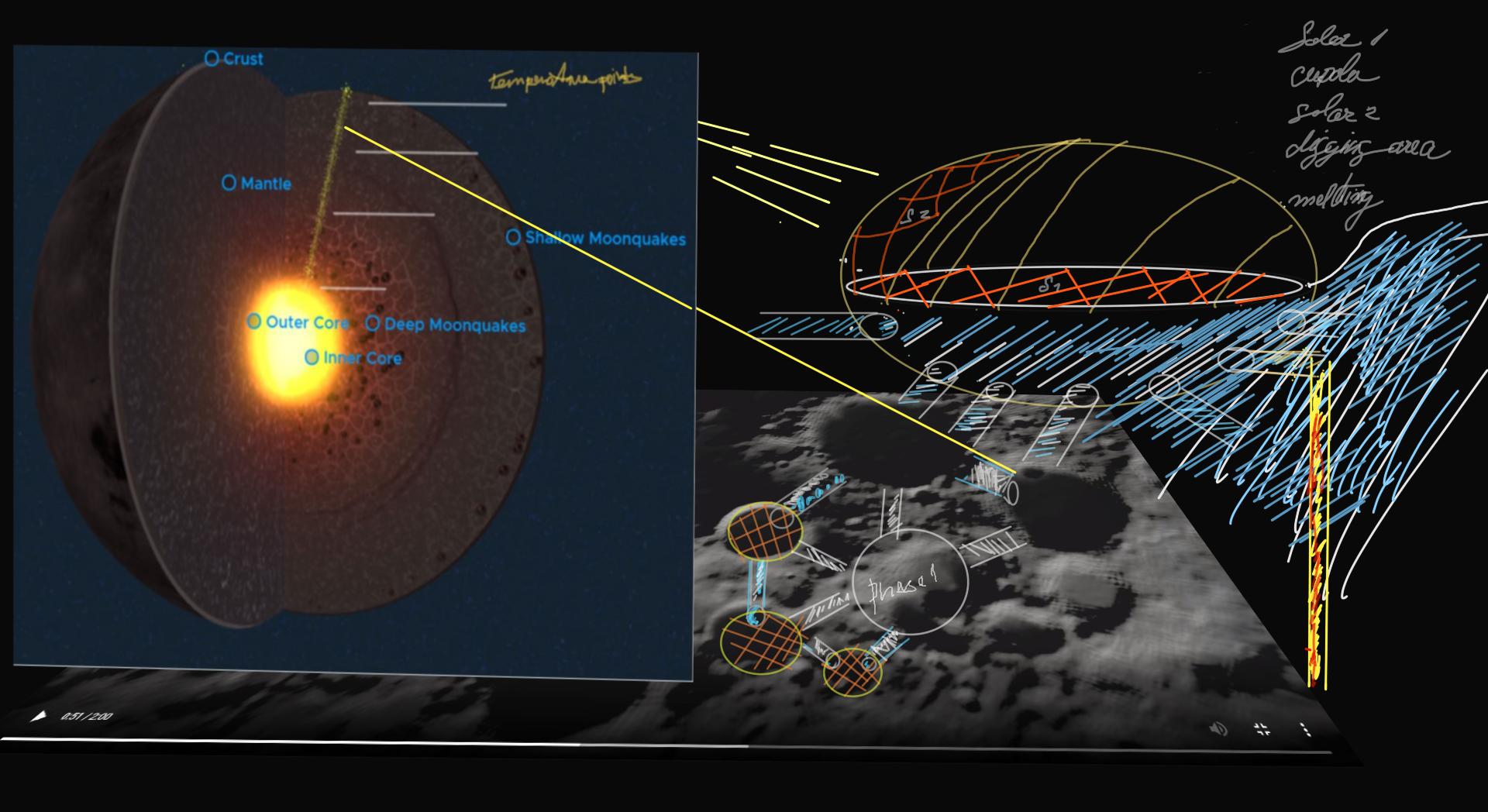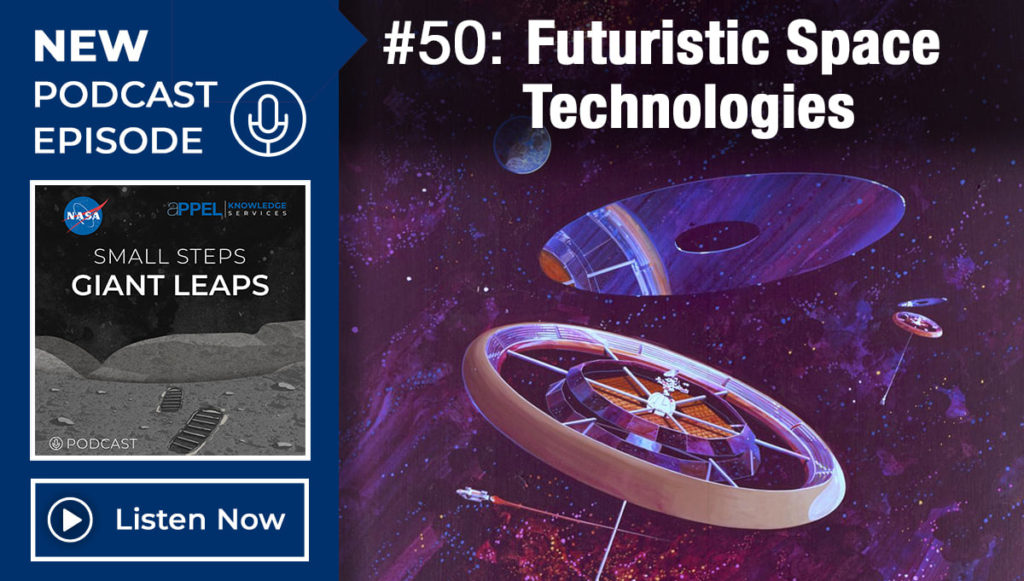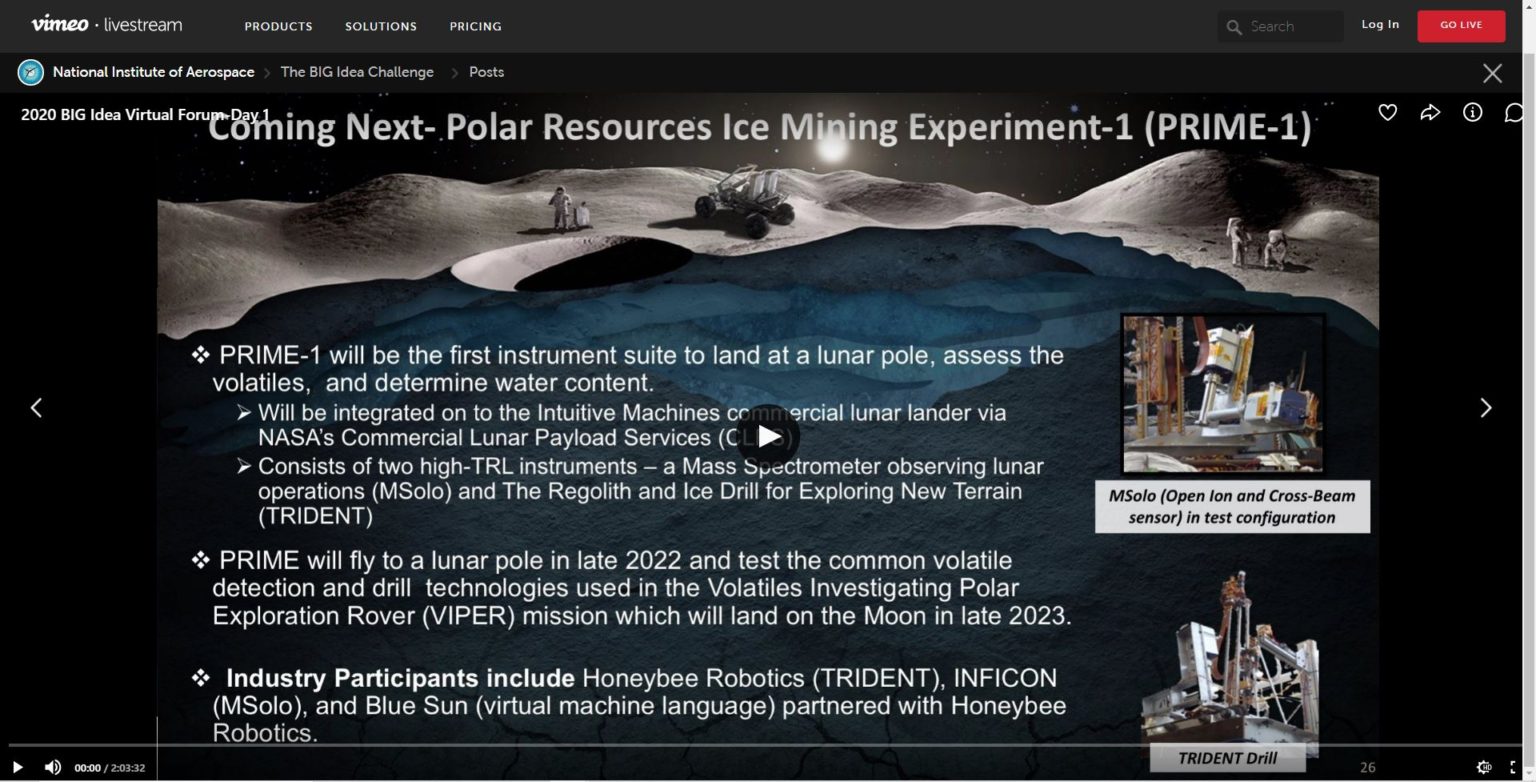I saw many ideas about the Moon/Mars habitats due to ARTEMIS mission, but you need something like Tokra building system alpha 1.0. Why?
- Because you need to eliminated/mitiged the unhabitable enviroment, which means extra hot and extra cold, radiation etc.
- You need a easely repair and craft/building system for new habitat and to using a Moon/Mars material/elements for that.
Due to this system you can to get easely any material for research.
That means you need space mining tools and crafts version 1.0 (upgradeable version) for teraforming any surface in the Universe, which :
- lasers 1 / 2 / another technology steps
- “minig mole” for tunnels
- printing tools
- robots
- etc.
You will to need
- Power/Charge Station
- Water/Oxygen etc. Production Station
- Sci laboratores
- Low/Microgravity lab
- Hospital Station/lab
- Gravity /Artificial gravity simulators,
- Food Garden
- Observation Station
- Docking Station, Sleeping room, Toalet room, Hospital, Healt Care Station, garages, Sure Resting Station / “Funny room” too, Hotels for all first turist, investors and visionaries, etc.
Already widely used on Earth, Fused Deposition Modelling could be the key to printing technology, tools and facilities using Moon dust on the lunar surface. Aurélie Hand puts it to the test during her internship at @esa's #SpaceshipEAC. https://t.co/zeVmVgZGbv #ExploreFarther pic.twitter.com/kpLyp01sTd
— Human Spaceflight (@esaspaceflight) March 29, 2021
very well, something like that and much more
Rockets and Lasers! Results from NASA Flight Opportunities Program: successful flights of Ejecta STORM on the @mastenspace Xodiac rocket. This is a laser instrument that measures the properties of lunar dust. Read more: https://t.co/XfAbVJjpin @UCF @NASAArmstrong @NASAfo
— Dr. Phil Metzger (@DrPhiltill) December 18, 2020
Turning Moon dust into oxygen: @metalysis_tech is fine-tuning a process that will be used to extract oxygen on the #Moon, leaving behind metal powders that could be used for #3Dprinting a Moon base 👉https://t.co/OJmLvHVvxa #ForwardToTheMoon pic.twitter.com/SbwdQ8fm8a
— ESA (@esa) November 28, 2020
This week on “Houston, We Have a Podcast,” we're talking about plants 🌱 in space!
— Johnson Space Center (@NASA_Johnson) November 20, 2020
👂 Listen: https://t.co/iK01mMdp23
📖 Read the transcript: https://t.co/NSJmcsJMYx pic.twitter.com/cqp7OPr3HN
If you want tu survive and keep human race alive, you need to settle universe, that means the higher probabilty to be alive due to any phenomenas in the universe.
We need a new commercial space station / space craft, a huge platform, where you can to live for nonlimited time, which can also to explore the solar system due to ion etc. engine systems.
Missions to the Moon will help us prepare for future missions to Mars
— UK Space Agency (@spacegovuk) November 18, 2020
🌍🚀- -🌑- - - - - - 🔴
Watch @LibbyJackson__, our Human Exploration Programme Manager, at @bluedotfestival reflect on the past, present and future of space exploration 👉 https://t.co/WeTsocI7wZ | #NAW2020 pic.twitter.com/mkTvIEsAU0
We’re going to the Moon 🌙#Artemis I will be our first integrated flight test of the @NASA_SLS rocket, the @NASA_Orion spacecraft, and the @NASAGroundSys at @NASAKennedy.
— NASA’s Artemis Program (@NASAArtemis) April 7, 2021
Learn more about what’s to come: https://t.co/QLM592XIro pic.twitter.com/nEjiMVXzx2
-
Gravity /
-
Artificial gravity simulators
Readying technology for other worlds is tricky. Thanks to a collaboration with @blueorigin, researchers will have a new option for testing instruments and experiments in lunar gravity conditions 🚀🌕: https://t.co/dCgp4D3VaP pic.twitter.com/huamni2yaJ
— NASA Technology (@NASA_Technology) March 9, 2021
Readying technology for other worlds is tricky. Thanks to a collaboration with @blueorigin, researchers will have a new option for testing instruments and experiments in lunar gravity conditions 🚀🌕: https://t.co/dCgp4D3VaP pic.twitter.com/huamni2yaJ
— NASA Technology (@NASA_Technology) March 9, 2021
SBIR/STTR Research Topics by
Focus Area
+ Expand 1 In-Space Propulsion TechnologiesFocus Area 1 In-Space Propulsion Technologies
+ Expand 2 Power Energy and StorageFocus Area 2 Power Energy and Storage
+ Expand 3 Autonomous Systems for Space ExplorationFocus Area 3 Autonomous Systems for Space Exploration
+ Expand 4 Robotic Systems for Space ExplorationFocus Area 4 Robotic Systems for Space Exploration
+ Expand 5 Communications and NavigationFocus Area 5 Communications and Navigation
+ Expand 6 Life Support and Habitation SystemsFocus Area 6 Life Support and Habitation Systems
+ Expand 7 Human Research and Health MaintenanceFocus Area 7 Human Research and Health Maintenance
+ Expand 8 In-Situ Resource UtilizationFocus Area 8 In-Situ Resource Utilization
+ Expand 9 Sensors, Detectors and InstrumentsFocus Area 9 Sensors, Detectors and Instruments
+ Expand 10 Advanced Telescope TechnologiesFocus Area 10 Advanced Telescope Technologies
+ Expand 11 Spacecraft and Platform SubsystemsFocus Area 11 Spacecraft and Platform Subsystems
+ Expand 12 Entry, Descent, and Landing SystemsFocus Area 12 Entry, Descent, and Landing Systems
+ Expand 13 Information Technologies for Science DataFocus Area 13 Information Technologies for Science Data
+ Expand 14 On-orbit Servicing, Assembly, and Manufacturing (OSAM)Focus Area 14 On-orbit Servicing, Assembly, and Manufacturing (OSAM)
+ Expand 15 Materials, Materials Research, Structures, and AssemblyFocus Area 15 Materials, Materials Research, Structures, and Assembly
+ Expand 16 Ground & Launch ProcessingFocus Area 16 Ground & Launch Processing
+ Expand 17 Thermal Management SystemsFocus Area 17 Thermal Management Systems
+ Expand 18 Air Vehicle TechnologyFocus Area 18 Air Vehicle Technology
+ Expand 19 Integrated Flight SystemsFocus Area 19 Integrated Flight Systems
+ Expand 20 Airspace Operations and SafetyFocus Area 20 Airspace Operations and Safety
+ Expand 21 Small Spacecraft TechnologiesFocus Area 21 Small Spacecraft Technologies
+ Expand 22 Low Earth Orbit Platform Utilization and Microgravity ResearchFocus Area 22 Low Earth Orbit Platform Utilization and Microgravity Research
+ Expand 23 Digital Transformation for AerospaceFocus Area 23 Digital Transformation for Aerospace
+ Expand 24 Dust MitigationFocus Area 24 Dust Mitigation
+ 25
NASA GeneLab
Open Science for Life in Space
the first comprehensive space-related omics database; users can upload, download, share, store, and analyze spaceflight and spaceflight-relevant data from experiments using model organisms.
Chce-li člověk osídlit nekonečný vesmír, nevystačí si jen s populačním růstem, jež je nutný pro všechny interakce a tak robotizace urychlý teraformaci planet a obživu v jakémkoli prostředí i na Zemi a tím i následný populační růst.
If humans want to settle the infinite universe, the high population grow will not the only one important thing for that and another one is the robotization, which will to unlocking the faster planet teraformation, livelihood etc. and after due to this the population in any enviroment can to grow more faster..
Humans needs to setle the universe due to high populatiton if you want to keep biodiversity. Space hasn’t limit.
Humans need a lot of research to find new technologies how to survival in any enviroment, which is important for survival the species homo sapiens sapiens in their universe and the way how to keep any biodiversities alive.
“Earth is the cradle of humanity, but one cannot remain in the cradle forever.” Konstantin E. Tsiolkovsky
.@NASA_Technology for the Moon and beyond. 🌔 ✨
— NASA Glenn Research (@NASAglenn) November 9, 2020
We've selected 17 U.S. companies for 20 partnerships to mature industry-developed space technologies, including a 3D printing system for the #Artemis lunar exploration program.
Read the details: https://t.co/Vz5hRbCDM4
💧 Water is a vital resource for lunar exploration and is necessary for a prolonged presence on the Moon. Today, we announced @NASA’s Break the Ice Lunar Challenge, awarding up to $500k to teams of creative, ambitious, and savvy innovators. REGISTER >> https://t.co/SxPKDPYiIY pic.twitter.com/Rnvah5VwGq
— Centennial Challenge (@NASAPrize) November 18, 2020
Planning a Mission to the
Lunar South Pole
: how to mitigate a debris/particles from mining – to use them
Dust on Earth can be a nuisance. But lunar dust can be dangerous! College students, you can help astronauts stay safe on future Moon missions by submitting your innovative ideas for lunar dust mitigation in the BIG Idea Challenge.
— NASA STEM Engagement (@NASASTEM) December 4, 2020
Entry Deadline: Dec. 13https://t.co/ykTlHxFqMg pic.twitter.com/MlolwGtAU9
: I see many projects, but important is habitat
: also important point and the big challenge to keep healty population anywhere on Mars/Moon/Orbit etc., is, how to simulate gravity, how to use microgravity for treatment etc.*
there is diferend biomechanism due to gravity. Any species is afected by gravity, which means their blood, bones, preasure etc.
All rocket engines, Earth spacecraft depends on gravity
Moon base is the big opportunity for the new spacecraft base systems.
However, one of the biggest challenge is the research how to mitigate gravity or how to change gravity pool in a specific place / local trase, anywhere
Status of Gravity Control
Spaceflight influences biology in dramatic ways, and people in space appear to experience the effects of aging faster.
— National Geographic (@NatGeo) December 2, 2020
America's newest U.S. senator (left) has played a role in early studies, both on the ground and as an orbiting astronaut https://t.co/lMElpRP1OD
.@NASA is looking for ideas on how to excavate the Moon’s ice at the lunar South Pole. The NASA Break the Ice Lunar Challenge is designed to develop new technologies that could support a sustained human presence on the Moon by the end of the decade. https://t.co/FANfnsYeAW pic.twitter.com/dP8BZTXZpY
— Kathy Lueders (@KathyLueders) November 29, 2020
- || huge circle solar sail
- || high temperature melting system
- || diging system under surface
- v
We're partnering with industry to collect resources from the Moon, to help prepare the way for a sustainable human presence there under the #Artemis program.
— NASA (@NASA) December 2, 2020
Tune in on Thurs., Dec. 3 at 1pm ET for an announcement of the companies selected: https://t.co/E81SWLhIU1 pic.twitter.com/YQtCrCysLA
NASA will buy moon dirt from these 4 companies https://t.co/UgiI7rVM79 pic.twitter.com/A4j1ZuTGUW
— SPACE.com (@SPACEdotcom) December 4, 2020
This Saturday, @NASA is launching cargo, supplies and SCIENCE to the @Space_Station. Learn about the biological and physical science experiments heading to humanity’s lab that orbits 250-miles above Earth: https://t.co/NaCFsfuSqz pic.twitter.com/dkY4q6qA1h
— Thomas Zurbuchen (@Dr_ThomasZ) December 4, 2020
Why Moon base at first?
Moon is the testing field for a new technologies in unhabitable enviroments.
+ near by Earth
+ low gravity
+ perfect observe place (ready for ATLAS base,, etc.)
Learning how space affects human health starts on Earth, where simulated missions help researchers understand how the body can adapt to challenges. These studies are vital for future @NASAArtemis missions, as we send humans to the Moon, Mars, and beyond. https://t.co/OLsWe9Bd5e
— Kathy Lueders (@KathyLueders) March 1, 2021
Timeline Break the Ice Challenge “Melting Ice”
NOVEMBER 18, 2020
Phase 1 opens
DECEMBER 2020 – JANUARY 2021
– Webinars to support registered Teams and potential Teams in developing their system architectures
– Promotional activities and/or other support for registered Teams
– Judging Panel Summit (virtual) to brief judges on roles/responsibilities and Challenge rules
JUNE 18, 2021
Deadline for registration and for Teams to submit their system architectures
JUNE – JULY, 2021
– Administrative review of the system architectures to verify compliance with rules
– Judging Panel may conduct virtual interviews with Teams
JULY – AUGUST, 2021
– Judging Panel reviews and scores the system architectures
– Judging Panel Summit (virtual) to determine Phase 1 winners
AUGUST 13, 2021
Phase 1 winners announced
-
Cupola Habitat Solar Melting Diging Crater phase 3
-
Cupola Habitat Solar Melting Diging Crater Phase 4
- vaporizer system
-
Cupola Habitat Solar Melting Diging Crater Phase 5
-
Cupola Habitat Solar Melting Diging Crater Phase 1
-
mole diging safety area habitat something like Boring Moon company
-
creating a glazure walls melting by lasers during diging process
-
Moon Manhattan
All this H20 is why university teams will be competing in @NASA's Moon to Mars Ice & Prospecting Challenge where they are tasked with developing technologies capable of extracting water beneath the Lunar and Martian surfaces: https://t.co/Bx0OcibygW pic.twitter.com/D2NWxEl0lo
— NASA 360 (@NASA360) December 16, 2020
This week, we announced the selection of finalists who will design, build, and test prototype systems capable of extracting water from ice deposits below the surface of the Moon and Mars. Another place where you are helping us solve a big problem. https://t.co/G4vLRWKIdW
— Kathy Lueders (@KathyLueders) December 16, 2020
Through international partnership, space exploration can thrive. Recently @NASA and @UNOOSA signed a memorandum of understanding pledging cooperation in areas of science and technology to support the peaceful use of outer space. Read more: https://t.co/FSpqcOlreT pic.twitter.com/xyzGhlLFkP
— Kathy Lueders (@KathyLueders) December 18, 2020
-
Dendrite Fragmentation
-
and Morphology
-
During Melting
-
and Solidification (DFM)
Science Objective
Nearly all metal alloys are produced by cooling a liquid metal until it hardens into a solid. Similar to the process seen in a snowstorm, in metal castings the solid grows by the formation of millions of snowflake-like crystals called dendrites. The shape of these dendrites affects the strength of metal alloys.
Status
This investigation is planned to launch aboard SpaceX-21 to the International Space Station (ISS) in December 2020.
Experiment Description

#ICYMI - @NASA selected four companies to collect lunar resources, ensuring that #Artemis operations can be conducted safely and sustainably in support of establishing human lunar exploration. https://t.co/Zh84RBsIfk pic.twitter.com/2nBjaJxBcs
— Kathy Lueders (@KathyLueders) December 6, 2020
Since she began her cryogenics career at @NASAKennedy, Angela Krenn’s specialty has been using extreme cold to solve engineering challenges. Now, her career is heating up as principal technologist for thermal in the Space Technology Mission Directorate. https://t.co/4eTMqVFVYQ
— Kathy Lueders (@KathyLueders) December 7, 2020
NASA 2019 STTR Program Phase II Selections – Firm List
Proposals Selected for Negotiation of Contracts
-
Alphacore, Inc.
304 South Rockford Drive
Tempe, AZ 85281
Esko Mikkola (480) 494-5618
Arizona State University-Tempe
University Drive and Mill Avenue
Tempe, AZ 85281
19-2-T13.01-4035 SSC
Ensuring Correct Sensor Operation and Decisions Under Harsh Environments
-
Alphacore, Inc.
304 South Rockford Drive
Tempe, AZ 85281
Esko Mikkola (480) 494-5618
Vanderbilt University
2101 West End Avenue
Nashville, TN 37235
19-2-T6.05-4023 LaRC
Model and Testing Based Assurance of COTS Systems in Space Radiation Environments
-
Cactus Materials
7700 South River Parkway
Chandler, AZ 85284
Mohammed Rafiqul Islam (480) 213-4704
Arizona State University
699 South Mill Avenue
Tempe, AZ 85281
19-2-T6.06-4319 JSC
Controlling Silver Release from Antimicrobial Surface Coatings for Biofouling Control
-
Chemtronergy, LLC
3619 West 1987 South
Salt Lake City, UT 84104
Greg Tao (801) 981-9997
University of Utah
201 Presidents Circle, Room 201
Salt Lake City, UT 84112
19-2-T15.03-4336 GRC
Solid State Li-S Battery Based on Novel Polymer/Mineral Composite
-
Continuum Dynamics, Inc.
34 Lexington Avenue
Ewing, NJ 08618
Melissa Kinney (609) 538-0444
Georgia Tech Research Corporation (GTRC)
250 14th Street Northwest
Atlanta, GA 30318
19-2-T15.01-2847 LaRC
Next Generation Distributed Electric Propulsion Urban Air Mobility Aircraft Analysis/Design Tools
-
Continuum Dynamics, Inc.
34 Lexington Avenue
Ewing, NJ 08618
Melissa Kinney (609) 538-0444
Pennsylvania State University
112 Hammond Building
University Park, PA 16802
19-2-T15.01-3500 AFRC
Urban Air Mobility (UAM) Terminal Area Ride Quality and Safety Assessment Tool
-
Cornerstone Research Group, Inc.
510 Earl Boulevard
Miamisburg, OH 45342
Carri Miller (937) 320-1877
University of Delaware
104 Hullihen Hall
Newark, DE 19716
19-2-T12.05-3201 JSC
Automated Fabrication of Ablation-Resistant Thermal Protection Systems
-
Espace, Inc.
30 Lynn Avenue
Hull, MA 02045
Francois Martel (781) 925-3893
Massachusetts Institute of Technology
77 Massachusetts Avenue
Cambridge, MA 02139
19-2-T2.03-2775 MSFC
-
H2O Insights, LLC
12794 East Sahuaro Drive
Scottsdale, AZ 85259
Kelly Westerhoff (480) 209-9140
Arizona State University-Tempe
551 E. Tyler Mall St ERC RM 159
Tempe, AZ 85281
19-2-T6.06-2448 JSC
-
Mirios, Inc.
429 West Valerio Street, #25
Santa Barbara, CA 93101
Alexander Spott (805) 364-2987
The Regents of the University of California, Santa Barbara
3227 Cheadle Hall, 3rd Floor
Santa barbara, CA 93106
19-2-T8.02-3360 GSFC
-
Multi3D, Inc.
101 Woodwinds Industrial Court, Unit U
Cary, NC 27511
Allen Gray (919) 667-7499
Duke University
103 Allen Bldg
Durham, NC 27708
19-2-T8.04-3301 GSFC
Beam-Steering Metasurface Antenna for Lunar Soil Moisture Sensing
-
Plasma Processes, LLC
4914 Moores Mill Road
Huntsville, AL 35811
Timothy McKechnie (256) 851-7653
Georgia Tech Research Corporation (GTRC)
250 14th Street Northwest
Atlanta, GA 30318
19-2-T2.03-3789 MSFC
Dual Mode Green Monopropellant Propulsion System for Interplanetary Missions
-
QorTek, Inc.
5933 North Route 220 Highway
Linden, PA 17744
Zachary Stimely (570) 322-2700
Colorado State University
Sponsored Programs; 601 S. Howes St.
Fort Collins, CO 80523
19-2-T2.02-3763 GRC
-
Research in Flight
1919 North Ashe Court
Auburn, AL 36830
Roy Hartfield (334) 444-8523
Auburn University
23 Samford Hall
Auburn, AL 36849
19-2-T15.01-2965 ARC
-
SoneLite, Inc.
2311 Via Aprilia
Del Mar, CA 92014
Paul Bremner (619) 977-4048
Oklahoma State University-Main Campus
107 Whitehurst
Stillwater, OK 74078
19-2-T5.02-3311 KSC
Stochastic Cable Harness Coupling to Electric Fields in Spacecraft Cavities
-
Spectral Energies, LLC
4065 Executive Drive
Dayton, OH 45430
Sivaram Gogineni (937) 266-9570
Purdue University-Main Campus
155 South Grant Street
West Lafayette, IN 47907
19-2-T2.03-4300 GRC
-
Tietronix Software, Inc.
1331 Gemini Avenue, Suite 300
Houston, TX 77058
Frank Hughes (281) 461-9300
University of Houston-Clear Lake
2700 Bay Area Blvd
Houston, TX 77058
19-2-T11.03-2769 MSFC
-
Touchstone Research Laboratory, Ltd.
The Millennium Centre, 1142 Middle Creek Road
Triadelphia, WV 26059
Brian Gordon (304) 547-5800
Clemson University
201 Sikes Hall
Clemson, SC 29634
19-2-T12.01-4092 LaRC
Precision Heated Tooling for OOA Curing of Thin-Ply Composites
-
Ultra-Low Loss Technologies
4453 La Paloma Avenue
Santa Barbara, CA 93105
Renan Moreira (805) 319-2491
University of California – Santa Barbara
Office of Research – 3227 Cheadle Hall
Santa Barbara, CA 93106
19-2-T8.02-4150 GSFC
.@NASA has selected 19 proposals from 17 U.S. small businesses for a total of more than $14 million in follow-on funding through the Small Business Technology Transfer program. The awards will help advance NASA priorities, including the #Artemis program. https://t.co/tX8NbOhYxF
— Kathy Lueders (@KathyLueders) December 10, 2020
algorithm
Future is Now! There don’t must be another chance. Remember, a dinos don’t like a big flying rocks, so everything is a experience, which to bring the knowledge and humans must be smarter than dinos including to keep the population grow.
We are all looking for access to nutritious food that prepares quickly. Even astronauts.
— NASA’s Artemis Program (@NASAArtemis) January 12, 2021
Food productions systems benefit people on Earth as well as deep space missions. Got an idea that could help? Join @NASA and @csa_asc's Deep Space Food Challenge. https://t.co/P0yowRAhNg
MEDIA – Developing innovative food production technologies with the #DeepSpaceFoodChallenge — the CSA and @NASA tackle food accessibility in space and on Earth: https://t.co/UqBTD3Prnu. pic.twitter.com/mrqDBEhHD3
— Canadian Space Agency (@csa_asc) January 12, 2021

Mirios, Inc.
Address429 W Valerio St Apt 25
Santa Barbara, CA, 93101-2982
Information
DUNS: 081048271
# of Employees: 1
Ownership Information
HUBZone Owned: N
Socially and Economically Disadvantaged: N
Woman Owned: N
Award Charts
Award Listing
-
Quantum Cascade Laser Array with Integral Wavelength Beam Combining
Amount: $139,793.00Mirios Inc., in collaboration with UCSB and NRL, proposes to construct a high-brightness MWIR (~4.5-4.9 m) light source, consisting of a single silicon chip with an array of Quantum Cascade Lasers whi …
STTRPhase I2019Department of Defense Navy -
Multispectral Mid-Infrared Laser
Amount: $124,380.00We proposenbsp;to construct a multispectral MWIR light sourcenbsp;consisting of a single silicon chip which will generate and combine lightnbsp;from a wide MWIR spectral range. Compared to existing co …
STTRPhase I2019National Aeronautics and Space Administration
.@NASASCaN engineers are evaluating navigation needs for the #Artemis program, including identifying the precision navigation capabilities needed to establish the first sustained presence on the lunar surface. https://t.co/d6nOpXNTtX
— Kathy Lueders (@KathyLueders) March 25, 2021
These analogs and the hazards they study are:
:envihab (gravity, environment): Located in Cologne, Germany, this analog is largely used to study the effects of microgravity on the body. Volunteers are placed on strict bed rest in a position in which the head is tilted down at a slight angle for one to two months, to induce the effects of weightlessness on the body. The facility is also used to examine how elevated carbon dioxide exposure and artificial gravity, through centrifuge spinning, affect crews. Elevated levels of carbon dioxide may impact the health of astronauts living in a spacecraft, underscoring the need for reliable air filtration technology.
Antarctic Stations (environment, isolation): Scientists study how isolation and confinement affect cognition, as well as the teamwork and social relationships of individuals working at research stations in the extreme environment of Antarctica over the winter.
NEK (isolation and confinement): In Moscow, Russia, crews of volunteers live inside a space station-like habitat for up to 12 months while researchers study the physical and mental health, social interactions, and team dynamics of those volunteers.
Human Exploration Research Analog (isolation, distance): Located at NASA’s Johnson Space Center in Houston, this analog is a simulated exploration habitat for studying behavioral health, crew communication, medical capabilities, and how astronauts use equipment and technologies. HERA simulations can also look at the crew’s ability to work autonomously. In a real mission to Mars, the crew members would experience communication delays due to the distance from Earth and would need to work together, with only sporadic input from Mission Control.
NASA Space Radiation Laboratory (radiation): NASA teamed with the U.S. Department of Energy to establish a lab at the Brookhaven National Laboratory in New York to help assess health risks associated with space radiation. The lab uses beams of ions to simulate cosmic rays and assess the effects on biological samples and equipment. This research helps to improve risk assessments for humans and develop techniques to reduce those risks as astronauts travel beyond Earth’s protective magnetosphere.
Learning how space affects human health starts on Earth, where simulated missions help researchers understand how the body can adapt to challenges. These studies are vital for future @NASAArtemis missions, as we send humans to the Moon, Mars, and beyond. https://t.co/OLsWe9Bd5e
— Kathy Lueders (@KathyLueders) March 1, 2021
🌌🟠I like this visions. Population grow and Earth isn't inflatable. We need to learn how to settle unhabitable Universe, how to explore a new technologies. There don't must be another chance how to survive. Many people likes idea as 'go back on trees', but that isn't smart way. https://t.co/dyIIN7XK2e
— Stanislav Stupka jr. (@StupkaStanislav) March 2, 2021
Join the 'UK Space Agency', 'Cornish Institute of Engineers', and 'Women in Mining' for a panel discussion on #MiningontheMoon at 1830-1930 on 4th March.
— Spaceport Cornwall (@SpaceCornwall) February 24, 2021
Zoom meeting: https://t.co/TayF1Uo19X 🇬🇧👷♀️⛏️@cornishengineer @WIM_UK @spacegovuk @CambSchMines 📷 @NASA pic.twitter.com/d9PuSqxVPv
🌌🌳Good to watch. In my mind is for long time these visions how to make adaptation material (btw, natural are all materials, diferend are interaction, if is abiogenese material, etc. and which interaction and morphology they have in any enviroments.
— Stanislav Stupka jr. (@StupkaStanislav) March 2, 2021
📽️https://t.co/tKxIK0NsYN https://t.co/u5wBMTpeIE
.@NASASCaN engineers are evaluating navigation needs for the #Artemis program, including identifying the precision navigation capabilities needed to establish the first sustained presence on the lunar surface. https://t.co/d6nOpXNTtX
— Kathy Lueders (@KathyLueders) March 25, 2021
just for explain what is exactly naturaly and the terminology “unnaturaly” is oxymoron.
We need to explore how to make sustainable tunnels atfirst, because that’s easely way, how to survive in unhabitable enviroments.
Anyway, we will to need all technology including on surface habitats and including under surface habitats.
Anyway in my mind is also something like a huge starstation/starship platform, which can be upgraded for nonlimited time, which can be prepared to eplore our solar system, which will be sustainable for nonlimite life time and will be in the future to prepared explore a deep space.
This vision is for me very important, because this platform can to survive “anything” and that will only depends at our modern of technology, which can be upgradable.
🌌🧫Food from Petri dish will be a human sustainable future not only at the deep space missions https://t.co/iViECUBMcu
— Stanislav Stupka jr. (@StupkaStanislav) March 2, 2021
Already widely used on Earth, Fused Deposition Modelling could be the key to printing technology, tools and facilities using Moon dust on the lunar surface. Aurélie Hand puts it to the test during her internship at @esa's #SpaceshipEAC. https://t.co/zeVmVgZGbv #ExploreFarther pic.twitter.com/kpLyp01sTd
— Human Spaceflight (@esaspaceflight) March 29, 2021


